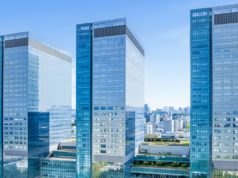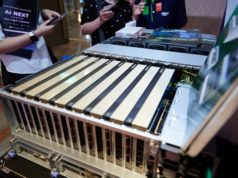Tesla recently not just only updated their media computer for the Tesla Model S and X with a more powerful Intel processor, it seems that a separate Autopilot computer for assisted driving functionality also has received an update. Version 2.5 boards are all Nvidia powered, with Pascal and now two Parker chips.
Right, you need to like all things Tesla, autonomous and in general speaking, be an interested g33k like yours truly to appreciate news like this, but hey here we go. As we all know, Nvidia has been rigorously active testing and implementing anything autonomous driving for some time now. Even at this weeks key-note speech the CEO already mentioned that he didn’t make the existing SOCs fast enough.
Nvidia announced Parker chips back in 2016, when NVIDIA introduced the Nv Driver PX 2 platform. That platform revealed two Parker SoC processors and two Pascal based assistive GPUs, all combined to power deep learning applications and offer you your autopilot, and in the future autonomous driving.
Let me first clear something up, what is referred to as Parker simply is the Tegra X2, it is a SoC with a scalable architecture, ergo if you need more computing performance, a Parker chip can be added. Now let’s have a look at some photos that a Model S owner with his updated “Autopilot 2.5” sent towards electrek.co, and yes it is showing a secondary Tegra X2. The previous version had just one of them.
Photos are courtesy of electrek.co
This is interesting to see, as the newer models Tesla 3, S and X will get/have this board. Basically, with the three chips, that’s almost a full Drive PX 2 setup that Tesla uses right now for their 2018 production cars. Parker is a dedicated automotive design chip and is based on a combo of Denver 2 (x2) + A57 (x4) ARM CPU cores paired with 256 Shader processors (Pascal architecture), it is the Tegra X2.
Mind you that the author of the photo above, designated the first left side chip as ‘Pascal’, and that caught my attention. That one remained a bit of a mystery but a close-up photo shows something interesting, it was assumed to be a 256 Shader processor based GPU. But it has the SKU codename GP106-510 🙂 Now before you think, hey that’s my GTX 1060, well we don’t know, it’s definitely something close to that GPU though. But a GTX 1060 has 1,280 shader processors and certainly is a totally different category opposed to anything with 256 shader processors. Dunno if it can play Crysis though!
Another thing I noticed, the board makes use of four SKHynix H5GC8H24MJR DRAM chips positioned just above the GP106 GPU, if you look that up that is VRAM in the form of GDDR5 SGRAM (8Gb). Video and parallel processing is obviously a big thing for anything with cameras and sensors, and that does require fast memory.
The combo of the three chips, however, will not very likely be enough for autonomous driving. As you can see from the upper screenshot (from last Tuesdays NVIDIA conference), Drive Xavier is the next platform, and currently, Nvidia is testing Pegasus. So that’s already a two-generation advance. CEO Elon Musk, however, has said that Tesla is still attempting to reach full autonomy on the original hardware suite, however, mentioned that they might retrofit the computers (free of charge) if they can’t. And that does seem to be the case. Musk earlier on also mentioned they’d be working on their own AI chip.






